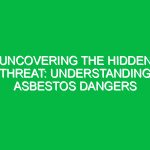Introduction
In the realm of Health, Safety, and Environment (HSE) management, the term “risk” is central to understanding how organizations protect their employees, assets, and the environment. To define risk in risk management is to recognize it as the potential for loss, damage, or adverse effects that may arise from a variety of hazards. This definition goes beyond mere identification; it calls for a systematic approach to evaluate, prioritize, and mitigate those risks effectively. As organizations strive for safety and compliance, grasping the nuances of risk in risk management becomes imperative.
The relevance of this concept cannot be overstated. In industries ranging from construction to healthcare, understanding the risks associated with daily operations is crucial. For instance, in a construction site, the risk of falling objects or unsafe machinery can have dire consequences. Thus, defining risk in risk management serves as the foundation for creating a robust HSE framework that not only ensures compliance but fosters a culture of safety.
The Essence of Risk in Risk Management
To effectively define risk in risk management, one must consider several key components: hazard identification, risk assessment, risk control measures, and continuous monitoring. Each of these components plays a significant role in shaping effective HSE strategies.
Hazard Identification
Hazard identification is the first step in the risk management process. It involves recognizing potential sources of harm that could adversely impact the health and safety of workers or the environment. This could range from physical hazards, such as machinery and chemicals, to psychosocial hazards, like workplace stress and harassment.
For example, during a routine inspection of a manufacturing facility, safety officers might identify that certain machines lack adequate safety guards. Recognizing this hazard is critical, as it sets the stage for further risk evaluation and management.
Risk Assessment
Once hazards are identified, the next step is risk assessment, which evaluates the likelihood and consequences of these hazards occurring. This process typically involves qualitative and quantitative assessments.
In a hypothetical scenario, consider a chemical plant where employees handle various hazardous substances. A risk assessment might reveal that while the likelihood of a chemical spill is low, the potential consequences could be catastrophic. By defining this risk, management can prioritize necessary safety measures, such as improved training and emergency response plans.
Risk Control Measures
Defined risks lead to the implementation of control measures designed to mitigate them. These measures can be categorized into three areas: elimination, engineering controls, and administrative controls.
– **Elimination**: Whenever possible, the best way to manage a risk is to eliminate the hazard altogether. For instance, a company might switch to non-toxic materials in its production processes.
– **Engineering Controls**: If elimination isn’t feasible, engineering controls, such as installing protective barriers or ventilation systems, can help reduce exposure to hazards.
– **Administrative Controls**: These include policies and procedures designed to minimize risk. Regular training sessions for employees about safe practices represent a simple yet effective administrative control.
Continuous Monitoring
Defining risk in risk management should not be a one-time task; it requires continuous monitoring and reassessment. The workplace environment is dynamic, and new risks can emerge over time. Regular audits, employee feedback, and incident reviews can reveal new hazards or changes in risk levels.
For example, after a near-miss incident involving a forklift, a company might implement new safety protocols and then monitor compliance and effectiveness. This iterative process enhances safety and fosters a proactive safety culture.
Benefits of Defining Risk in Risk Management
Understanding and clearly defining risk in risk management yields significant benefits for organizations within the HSE domain. Here are some notable advantages:
- Enhanced Safety: A thorough understanding of risk ensures that safety measures are tailored to specific hazards, thereby reducing the likelihood of accidents.
- Regulatory Compliance: Defining risk helps organizations adhere to relevant safety regulations and standards, avoiding legal repercussions.
- Improved Efficiency: By identifying and mitigating risks, organizations can reduce downtime caused by accidents and improve overall operational efficiency.
- Employee Morale: A strong safety culture fosters a sense of security among employees, improving morale and productivity.
Real-Life Examples and Case Studies
Consider the case of a large oil and gas company that experienced a significant workplace accident due to failure to properly define and manage risks associated with equipment maintenance. After the incident, the company re-evaluated its risk management processes. They implemented a comprehensive risk assessment program that included employee input, leading to the identification of numerous previously overlooked hazards.
As a result, they developed targeted training programs and enhanced maintenance protocols, significantly reducing incidents in subsequent years. This real-world example illustrates the tangible benefits of defining risk in risk management effectively.
Regulations and Standards
Several regulations and standards govern risk management in the HSE context, and understanding these is essential for compliance and best practices.
The Occupational Safety and Health Administration (OSHA) in the United States, for example, mandates that employers provide a safe working environment. This includes conducting regular risk assessments and implementing safety measures based on those assessments.
Similarly, the ISO 45001 standard focuses on occupational health and safety management systems. It emphasizes the need for organizations to define risks and opportunities to establish a safe and healthy work environment. Compliance with such regulations not only fosters a safer workplace but also enhances an organization’s reputation and credibility.
Actionable Insights for Effective Risk Management
To effectively define risk in risk management, organizations can adopt several best practices:
- Engage Employees: Involve employees in the risk assessment process. Their firsthand experience can provide valuable insights into potential hazards.
- Utilize Technology: Invest in technology that can aid in hazard identification and risk assessment, such as software that tracks incidents and near misses.
- Regular Training: Conduct ongoing training to ensure employees are aware of risks and safety protocols. This fosters a culture of safety and empowerment.
- Document Processes: Keep meticulous records of risk assessments, control measures, and incidents. This documentation can serve as a reference for future assessments and improvements.
Conclusion
Defining risk in risk management is not merely an academic exercise; it is a critical component of effective Health, Safety, and Environment management. By understanding and addressing the risks associated with their operations, organizations not only protect their employees and the environment but also enhance their operational efficiency and compliance with legal standards.
As we navigate an ever-evolving landscape of workplace safety, the importance of a proactive approach to risk management cannot be overstated. Organizations must commit to continuous learning and adaptation, ensuring that safety remains at the forefront of their operations. By doing so, they not only safeguard their workforce but also contribute to a healthier and more sustainable future for all.


